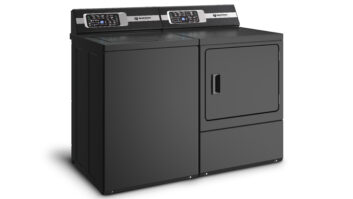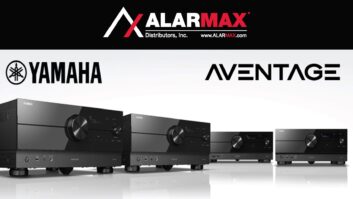North Korea and Japan weren’t talking while the CEATEC show was underway, but audio and video products were.
Sharp and Panasonic here at the trade show demonstrated rival no-new-wires network technologies, while Hitachi demonstrated an Ethernet-based AV network. Also at the show, the Digital Living Network Alliance (DLNA) announced updated interoperability guidelines to ensure that copyrighted content can be distributed securely throughout a home network.
Other networking developments included Sony’s launch of a Blu-ray player/recorder equipped with hard-disk drive (HDD) to serve up audio and video over a home’s Ethernet network.
Here’s what the companies announced:
DLNA: The DLNA Link Protection Guidelines would enable premium copyright-protected content to be shared among devices on a DLNA home network and will encourage content producers and service providers to develop and transmit content to consumers for use in home networks without violating copyright laws or artists’ rights, said DLNA board chairman Scott Smyth in unveiling the protection guidelines here during a keynote speech. “These guidelines will help to ensure premium content is protected and secure, which will open the door for content and service providers to develop innovative and creative content to appeal to a wider range of audiences.”
In another DLNA development, Hewlett-Packard demonstrated a printer/fax/scanner meeting DLNA Expanded guidelines that enable printers to print pictures from networked TVs, cellphones, and digital cameras. Hewlett -ackard offers the PhotoSmart C7100 in the U.S. but without DLNA firmware, which it will include when the alliance launches a DLNA Expanded certification program early next year, an HP spokesperson said. The Expanded spec was announced in March.
Under the printer guideline, the JPEG media format is the mandatory printer language for DLNA-certified printers.
Hitachi: The company used wired Ethernet connections to distribute high-definition video from a HDD recorder to a TV and from a HDD-equipped TV to a TV. Plans for commercial products were unavailable.
Panasonic: The company unveiled a $600 security camera incorporating the company’s 190Mbps powerline-network standard called HD-PLC. In-home and remote PCs loaded with Panasonic software will be able to move the camera lens and view live video through the cameras. It will be available sometime next year in the U.S. The company already offers HD-PLC Ethernet adapters in the U.S.
Sharp: The company once again demonstrated HomePlug powerline-network technology without announcing product plans. For its demo, Sharp connected Ethernet-to-HomePlug adapters to a video server and LCD TV and to a laptop and printer.
Sony: The BDZ-V9 Blu-ray player/recorder doubles as a media server, thanks to its 500GB HDD and Ethernet port. It streams two to three high-definition video programs simultaneously to Ethernet-equipped Sony TVs. The device also doubles as a DVD+/-R/RW recorder and incorporates two digital tuners and an analog tuner. It isn’t DLNA-certified.
It’s due in Japan in December at 300,000 yen (approximately $2,542). It’s not destined for the U.S. market.













